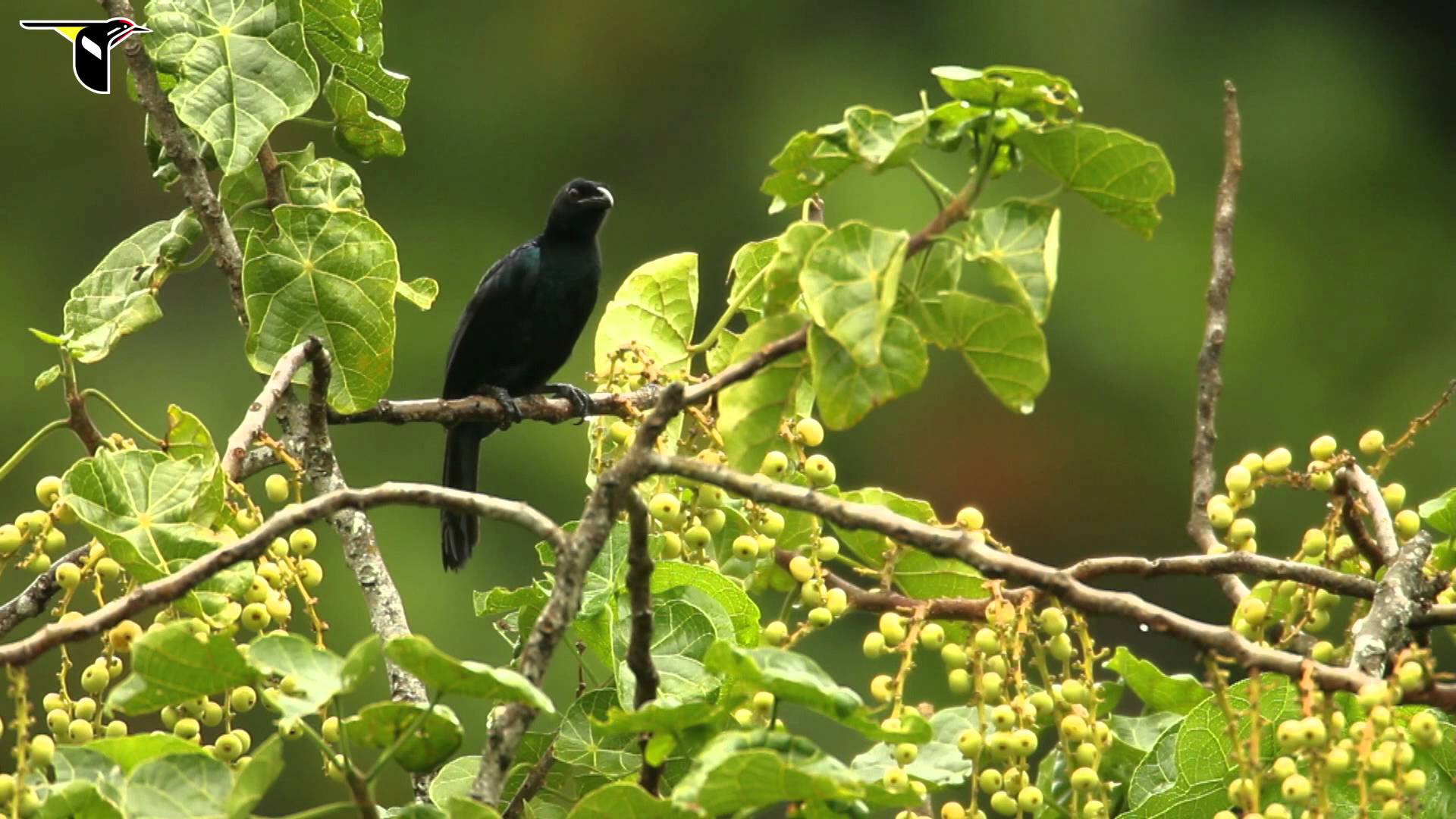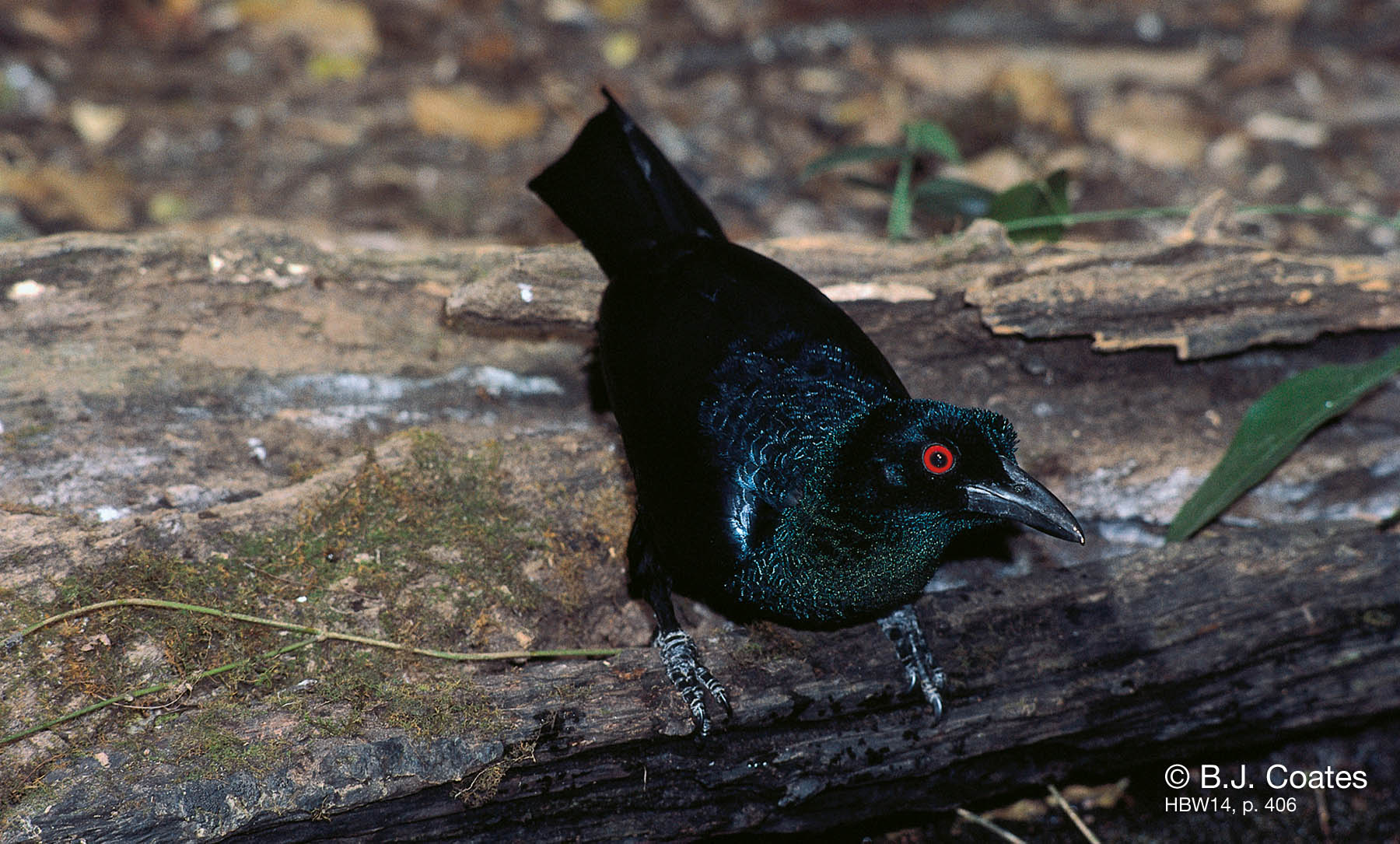
Manucodia chalybata
SUBFAMILY
Paradisaeinae
TAXONOMY
Manucodia chalybata Pennant, 1781, New Guinea (restricted to
Arfak Mountains).
OTHER COMMON NAMES
English: Green-breasted manucode, crinkle-breasted manucode,
green manucode; French: Paradisier vert; German:
Grьnmanucodia; Spanish: Manucodia de Cuello Arrugado.
PHYSICAL CHARACTERISTICS
13.0–14.2 in (33–36 cm); female 0.35–0.64 lb (160–289 g),
male 0.33–0.58 lb (150–265 g). Male and female have blueblack
head and neck with blue-green iridescent feather tips on
chin, throat, neck, and nape. Upperparts and uppertail coverts
and iridescent violet-black, with dark blue sheen. Underparts
also violet-black, but with yellow-green iridescence. Dark bill
and legs. Eyes red.
DISTRIBUTION
Hill and lower montane areas of New Guinea mainland and
lowlands of Missol Island. Generally at 1,968–4,920 ft (600-
1,500 m) but occasionally from sea level to 5,575 ft (1,700 m)
altitude.
HABITAT
Hill forests and midmontane rainforest edges.
BEHAVIOR
Courtship displays are simplistic, involving a male chasing a female
through foliage via numerous perches. The male gives
deep pigeon-like, or deep hollow, calls. Mostly frequents middle
to upper forest structure. Flight appears floppy and awkward;
wing beats are quick and convulsive, each accompanied by a
sharp jerking of the cocked tail and interspersed by short glides.
FEEDING ECOLOGY AND DIET
Predomininatly frugivorous and specializing in fruits of Ficus
figs. Commonly joins mixed species foraging flocks of predominantly
black and/or brown birds.
REPRODUCTIVE BIOLOGY
Socially pair-bonded non-territorial monogamy with both
sexes presumed to incubate and provision nestlings, as in other
manucodes. Breeding during at least July through September,
and in January. Nest is a shallow open cup suspended by its rim
from a branch fork. Clutch is one or two eggs.
CONSERVATION STATUS
Not threatened. Apparently common over much of range.
SIGNIFICANCE TO HUMANS
In being monogamous, Manucodia provide an interesting contrast
to the majority of polygynous family members for socioecological
study.
Other popular Animals
Photo Gallery of - Crinkle-collared manucode




 Animalia Life
Animalia Life